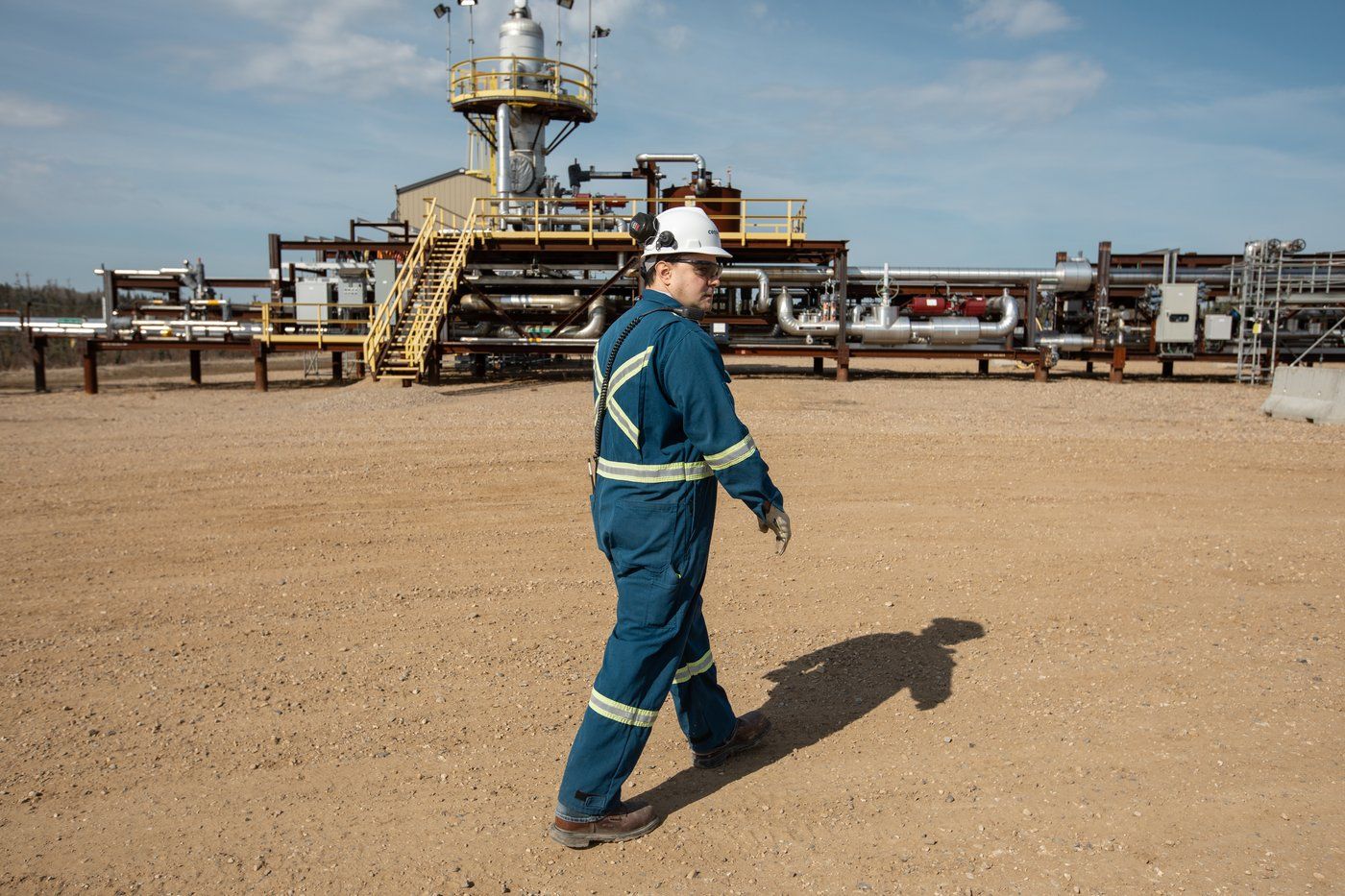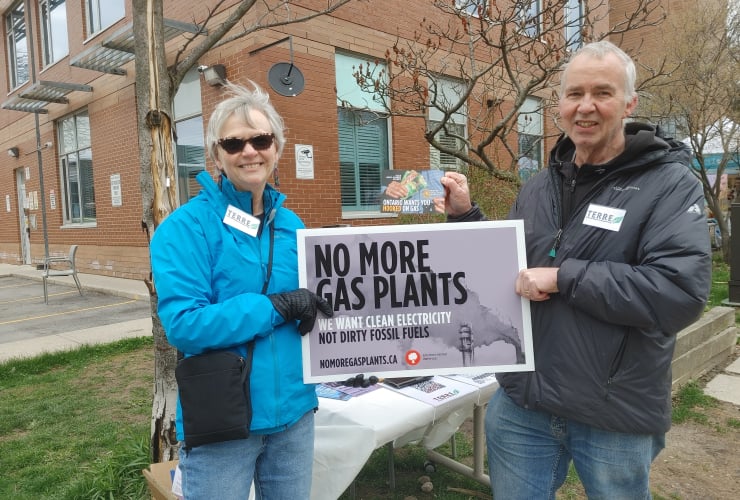As the urban centre at the heart of Canada's oilsands industry, Fort McMurray has seen more than its share of ups and downs.
A decade and a half ago, the northern Alberta community was this country's most famous boom town. High oil prices helped to drive unprecedented demand for the thick, viscous bitumen that lies beneath the earth's surface here, and workers flocked from around the world to cash in on the bonanza.
Then crude prices crashed, layoffs began, and the frenzy of oilsands-related construction dried up. The party, it seemed, was over.
Now, with the official opening of the long-awaited Trans Mountain pipeline expansion just days away, those who live and work in this region hope their fortunes are once again headed for an upswing.
'What supports them, supports us' — a community tied to one industry
Fort McMurray, population 68,000, is situated in northern Alberta in the heart of the Athabasca oilsands, the world's third-largest proven crude oil reserve.
The oil industry permeates every aspect of life here. Every morning, oil workers clad in blue-and-yellow coveralls line up at the local Tim Hortons for double-doubles, and diesel trucks and big rigs churn up dust on their way out to industrial work sites. The airport gift shop sells "Canada's Oilsands" sweatshirts and local rec centres and educational facilities are emblazoned with the names of their oil company sponsors.
With so many livelihoods dependent on oil, all eyes here are on the expected opening this week of the Trans Mountain pipeline expansion, a years-in-the-making megaproject which will soon start shipping Canadian crude to export markets.
“It’s hard to quantify the value of the ... pipeline to a region like ours," said Dennis Vroom, senior strategic advisor for the regional municipality of Wood Buffalo, which encompasses Fort McMurray and the surrounding rural area.
"We are so heavily supported by oilsands operators in the region, that when things that are important to them — like the Trans Mountain pipeline — happen, there are direct benefits to us. What supports them, supports us.”
The Trans Mountain pipeline, which was bought six years ago by the federal government, is Canada's only oil pipeline to the West Coast. The expansion will increase its capacity from approximately 300,000 barrels per day currently to 890,000 barrels per day, improving access to export markets for Canadian oil companies.
The path to get here hasn't been rosy. The pipeline project, which took more than four years and at least $34 billion to construct, has been marred by environmental protests, delays and budget overruns.
The federal government, which paid $4.5 billion for the project in 2018, is likely to take a significant writedown when it tries to sell the completed project, experts say. And Trans Mountain itself remains locked in a dispute with its oil company customers about the rising fees it wants to charge them to ship their product.
Still, oilsands producers have been waiting for this pipeline for a long time. Export issues have been a thorn in the side of Canadian energy companies for years, due to a lack of pipeline capacity from Alberta's oilsands region to coastal tanker loading facilities.
That shortage of pipeline space, combined with refinery and transportation costs, is the reason Canadian oil producers typically take a price discount on their product compared with their U.S. competitors.
It has also inhibited oil companies' ability to grow, so the anticipation when it comes to Trans Mountain is real.
Oil output climbing to all-time heights
“It’s an exciting time. It’s been a long time since we’ve had some new incremental egress for Canadian products," said Drew Zieglgansberger, executive vice-president and chief commercial officer for Cenovus Energy Inc., a major contracted shipper on Trans Mountain.
"We had some growth and efficiency projects on the books already, but (the pipeline expansion) does enable some stability in the market in the near and medium-term that really does give us some confidence to add more growth to the company.”
The additional export capacity that Trans Mountain will provide means that 2024 is expected to be a boom year for oil output.
A recent TD Economics report suggested Canadian oil production this year could grow by between six and 10 per cent year-over-year, the equivalent of between 300,000 and 500,000 barrels per day.
Even on the low end of the forecast, this growth rate would match the average annual oil output growth rate Canada saw in the booming years between 2010 and 2015, when commodity prices were high and Alberta's oilsands region was undergoing unprecedented levels of construction and activity.
But today, the oil price downturn of the last decade forced companies to tighten their belts. Rather than spending on major capital projects, oil companies have spent the last couple of years of strong commodity prices paying down debt and rewarding shareholders with healthy dividend payments.
Technological advancements have also meant that companies now know how to increase their oil output without massive increases in capital spending.
Cenovus, for example, plans to grow its production by 150,000 barrels a day over the next five years.
But the company — which once thought it would build an entirely new processing facility at its Narrows Lake oilsands asset, now under development — has decided instead to use new technology and engineering methods to connect that site with the central processing facility at its currently operating Christina Lake project, located about 150 km southeast of Fort McMurray.

Like Cenovus' other oilsands projects, the Narrows Lake development will use a drilling method called steam-assisted gravity drainage to extract the thick, heavy oilsands bitumen. But because of these changes, it will cost much less and require far less construction than originally planned.
"The oilsands of 15 years ago, we just didn’t have some of the technologies or the operating experience and practices that we have today," Cenovus' Zieglgansberger said.
"It's allowed us, from an overall development cost, to really lower the cost of producing oil."
'So Many Things Have Changed'
Many people's mental image of Fort McMurray is synonymous with the period when the community was a bustling boom town defined by heavy traffic, high housing costs and money that seemed to grow on trees.
Sarah Thapa, the owner of Avenue Eatery & Café which opened in 2021, remembers those days. She moved to Fort McMurray in 2012, during the height of the oilsands boom.

"I got a job as a server at one of the local restaurants, and they made seven to 10 grand just by selling breakfasts," she said.
"It was packed every day, it didn't matter if it was Monday, Tuesday, 6 a.m. in the morning — every table was taken," Thapa said. "Every restaurant, every small business in town, was doing so well."
But after a decade of layoffs and oil company consolidation, the atmosphere in town is not the same, she said. The community has also had to contend with the 2016 wildfire that destroyed approximately 2,400 homes and buildings in Fort McMurray, the COVID-19 pandemic, and a 2020 flood that forced thousands of residents from their homes and caused more than $520 million in insured damages.
"COVID happened, the flood happened, the fire happened — and we’ve not seen the town the same way," Thapa said. "So many small businesses have already closed and left town ... so many things have changed since I moved here.”
While Thapa said she welcomes the Trans Mountain pipeline expansion, she knows this year's record oilsands output is not going to turn Fort McMurray back into the boom town of yesteryear. The companies are leaner, they're producing more oil but spending less, and the days of the construction-heavy oilsands expansion projects are over.
The climate change problem
Another factor that makes today's oilsands different is ever-growing environmental scrutiny. Since the last industry boom, Canada has signed the Paris Agreement, an international treaty on climate change that commits signatories to greenhouse gas emissions reduction targets. The world has faced a growing number of climate-related extreme weather disasters, and calls to reduce society's reliance on fossil fuels are intensifying.
The process of extracting oilsands bitumen is a comparatively emissions-heavy way of producing oil. And while companies have been able to reduce the greenhouse gas intensity per barrel, the industry's overall emissions footprint is increasing due to increased production. In 2021, the oil and gas sector was responsible for 28 per cent of Canada's overall emissions.
The industry believes it can continue to grow while reducing its environmental impact. Six of the largest oilsands companies have banded together to form what they call the Pathways Alliance, through which they are proposing to build what would be one of the largest carbon capture and storage projects in the world.
That project would involve building a 400-kilometre pipeline to transport carbon dioxide emissions from 20 different oilsands production facilities in northern Alberta and embed them safely in an underground storage hub. If it goes ahead, it could mean a new era of construction in the oilsands.
"That's a $16 billion project right there that’s looking to start construction," said Lisa Sweet, director of business and investment attraction for Fort McMurray-Wood Buffalo Economic Development.
"There are investment opportunities that are coming, and we're out there to promote that."
But the Pathways Alliance companies haven't yet made a final investment decision and there are a number of uncertainties hanging over their project. One of these is the federal government's proposed emissions cap, which is supposed to be finalized sometime this year.
The government has said the cap is meant to cap pollution, not production, but the industry has warned the cap will have "unintended consequences" — scaring away investment and potentially causing companies to curtail their output and spending.
It seems likely that the environmental impact of the oilsands will continue to be scrutinized for years to come, and that too has an impact on the local community.
"Our community is so closely tied to the oilsands that sometimes the negative image of the oilsands that gets painted unfairly translates to our community as well," Vroom said.
A new era
The Trans Mountain project has taken so long to build, and the oilsands industry has had so much time to prepare, that it is expected to be filled soon after coming online. Many in the industry believe Canadian oil output will exceed pipeline capacity again within a few years, perhaps as early as 2026.
But for the time being, the Trans Mountain pipeline expansion represents a new era — for both the industry and the community most closely linked to it. The next few years may not be a repeat of the heyday of Fort McMurray, but they do represent a revival of opportunity.
"People come here for economic opportunity, and that hasn't changed and that won't change," Sweet said.
"The Trans Mountain pipeline just reiterates that message."
Back at Avenue Eatery & Café. Thapa echoed that sentiment. "I’m optimistic about the town picking up again," she said.
"We may not see the businesses doing as well as they were 10 to 15 years ago, but overall I think we’re going to come back. I think we’re going to see some positive changes, I really do.”
This report by The Canadian Press was first published April 29, 2024.
Companies in this story: (TSX:CVE; TSX:SU)
It probably will boost their
It probably will boost their local fortunes--a little, for a little while. It will hurt everyone else more than it will gain for them. But their bigger hopes will be dashed IMO. There are two trends that are going to scuttle the prosperity of Fort McMurray. The first is automation--the companies will be continuing to lay people off even if production does increase forever. There's been a big push for that, it's just like what happened in forestry back in the day; forestry is still big business in BC, but its political influence is much quieter because the amount of actual employees is a shadow of what it once was.
The second is demand. Alberta can refuse to allow solar and wind projects to go ahead in Alberta, they'll probably put levies on electric cars, whatever, but their little tantrums can't stop their customers. They want to sell to China. China's auto sales this year will probably be 45% electric. Two years from now, over 50%. Every year they set a new record installing solar power. Their demand for oil is going to drop. When they can buy light sweet crude from their ally Russia, their friend Iran, and various neutral parties, why should they buy diluted bitumen from a country that is pretty much their enemy?
Meanwhile, China is increasingly exporting those cheap electric cars. To the rest of Asia, to Latin America, to the EU, to Africa. Everyone is going to be making the shift just because Chinese electric will be cheaper to buy and cheaper to run than legacy ICE cars from the US, Japan and Europe. Europe is switching over anyway, and even the Japanese are starting to get on board. World demand for crude is gonna start to drop, which means the price will drop. When the price drops, we've seen it before--tar sands gets priced out of the market and the oil patch jobs disappear. The difference is the next bust will be the last, there won't be another boom after it.
So my advice to anyone in Fort McMurray is, don't live large and squander this time, squirrel away that cash while you have the chance, because this is the last boom and it isn't gonna last long.
You pretty well nailed it.
You pretty well nailed it.
Honda just laid down $15B on a battery plant in Ontario last week. Ontario and Quebec are becoming one of the most important battery manufacturing hubs in the Western world. Alberta needs to wake up to these emerging trends toward stopping burning stuff.
As this industry matures, recycling will form a larger share of the manufacturing process. It's possible to develop a closed loop eventually, which will dramatically minimize the mining of raw metals.
The only thing I would add is that the discount paid on Alberta bitumen in the US is not only due to a lack of shipping capacity and such, as the authors iterates, but because it's a poor quality product that requires an extra step in refining to make higher quality products. Alberta preferred to stick to exporting raw product, with a few exceptions.
I believe that can be pinned to the ~80% foreign ownership of Alberta's oil extraction outfits, who prefer shipping it to their own refineries in the US for refinement and taking a fuller share of the price differential and capturing the value added at home.
Albert likes to blame everyone but themselves for any stormy oil price seas or lack of delivery capacity. Danielle Smith should be challenged to buy a majority share in TMX, if her belief in the Holy Grail of petroleum is that strong. This would also position Alberta to assume the majority of losses as their export markets transition to electricity in the coming years. In fact, the vaunted Asian markets never did materialize. These are the oft-cited "customers" who will pay premium prices for a low quality product plus transoceanic shipping costs. That narrative is still out there and is just plain magical thinking.




Comments